Travel Ukuleles
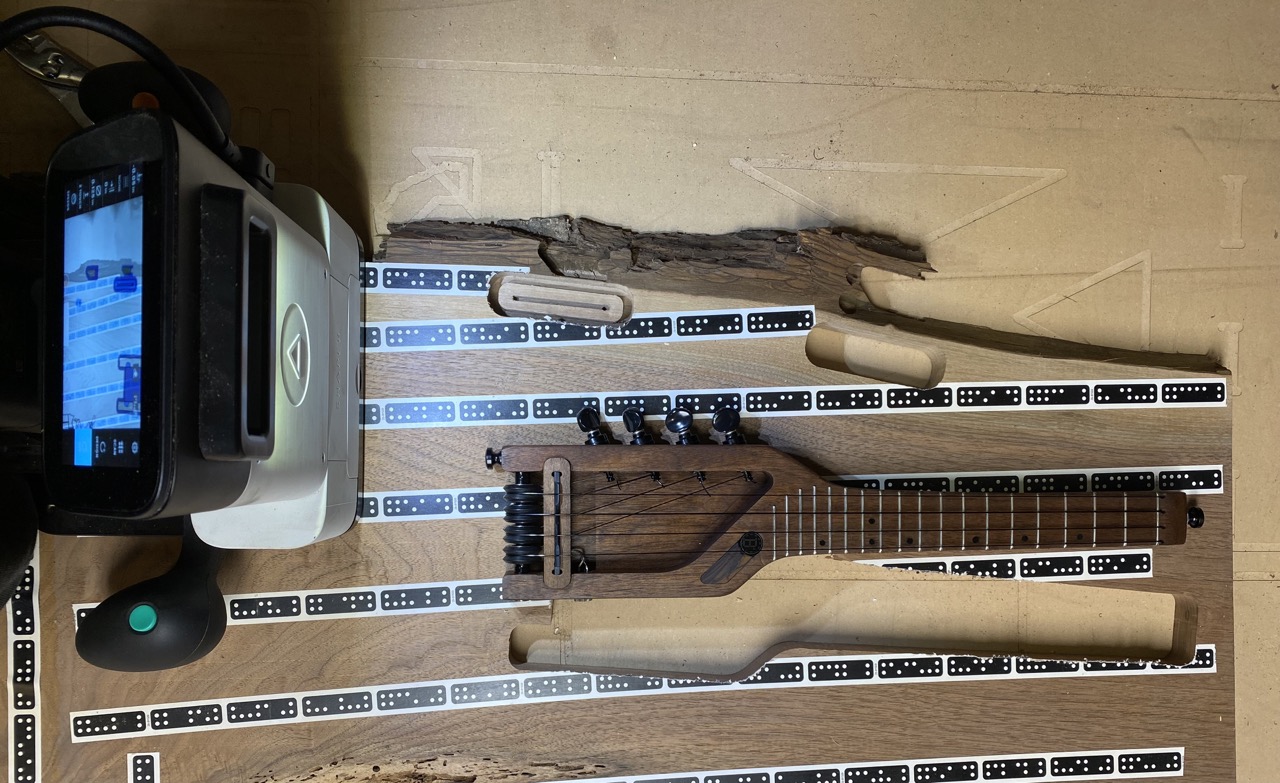
A while ago I made a travel ukulele for Tanya—and more recently another for Nicole—and I figured I’d write about them in part because I think it went well but also because they were inspired by some other cool projects that deserve some cred.
Shaper Origin demo
First and foremost, the Shaper demo. I backed Origin when it was on Kickstarter; at the time they sent prototypes to some makers who in turn helped produce some sweet marketing videos about the process of using the tool and, of course, their results. One of them was “Travel Ukelele”:
I had to make one, and set off looking for more inspiration.
Risa Uke-Solid (formerly Risa Stick)
The best known travel ukulele is probably the Risa Uke-Solid, which is pretty similar!
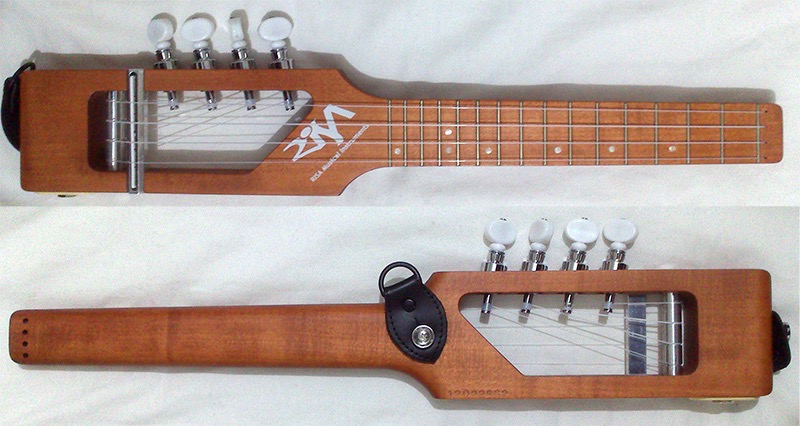
(I downloaded this image so long ago that I cannot for the life of me find its origins. IIRC is was posted to a forum? Anyway if it’s yours please let me know so I can credit you)
One thing I really like about the Risa is how the tuners are angled so the strings naturally wrap down the post of the tuning pegs. I’m not sure how the Shaper demo ukulele is to tune, but it was a one-off while the Risa is A Product that you can purchase, so the angle is probably useful. It also looks nice. I really like their use of a zero-fret, and the strap buttons are smartly-placed as well.
The cutout of the Risa goes all the way through, while the Shaper demo uke keeps a thin bit of wood in the back for resonance. Both look longer than they need to be—why extend the body beyond the strings? In the Risa’s case it’s to fit a full size ¼” jack in the butt, but I reckoned a ⅛” jack along the bottom somewhere would be just as good.
Circuits and Strings Backpacker Ukulele
This ukulele is truly only as long as it needs to be.
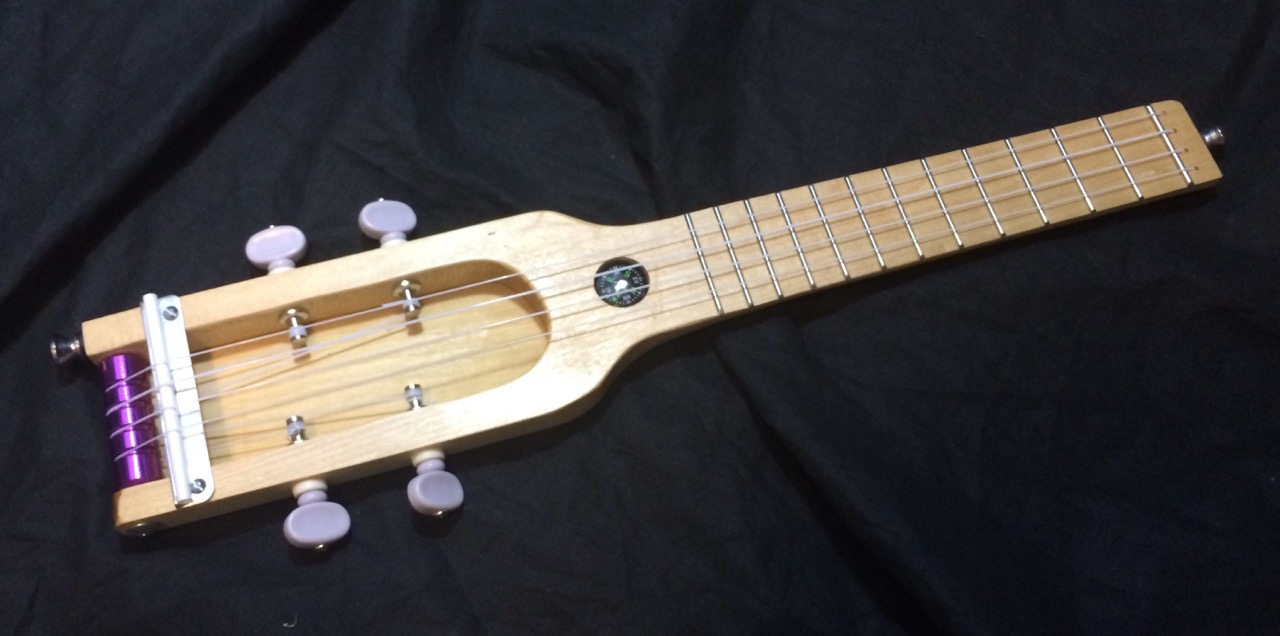
Photo credit: Daniel Hulbert
It’s pretty roughly-built, but it was really close to the form factor I had in mind and that built-in compass was a very nice touch.
Obviously the compass is a gimmick—nobody is wayfinding out in the wilderness with a map in one hand and a ukulele balanced on the other—but you know what people with travel ukuleles do need to do regularly? Tune their instrument! A bit of searching and I found the Fender Bullet Tuner; a perfect built-in accessory for my travel ukulele.
v1
I went a bit overboard making this thing. The tuning pegs are really nice planetary units (same as the Risa, I suspect), there’s a piezo rod under the bridge, I used a gorgeous slab of black walnut and made an inlay out of its bark.
I hand-filed a TUSQ bridge intonated for high-G, and found V wheels with bearings to minimize friction when tuning:
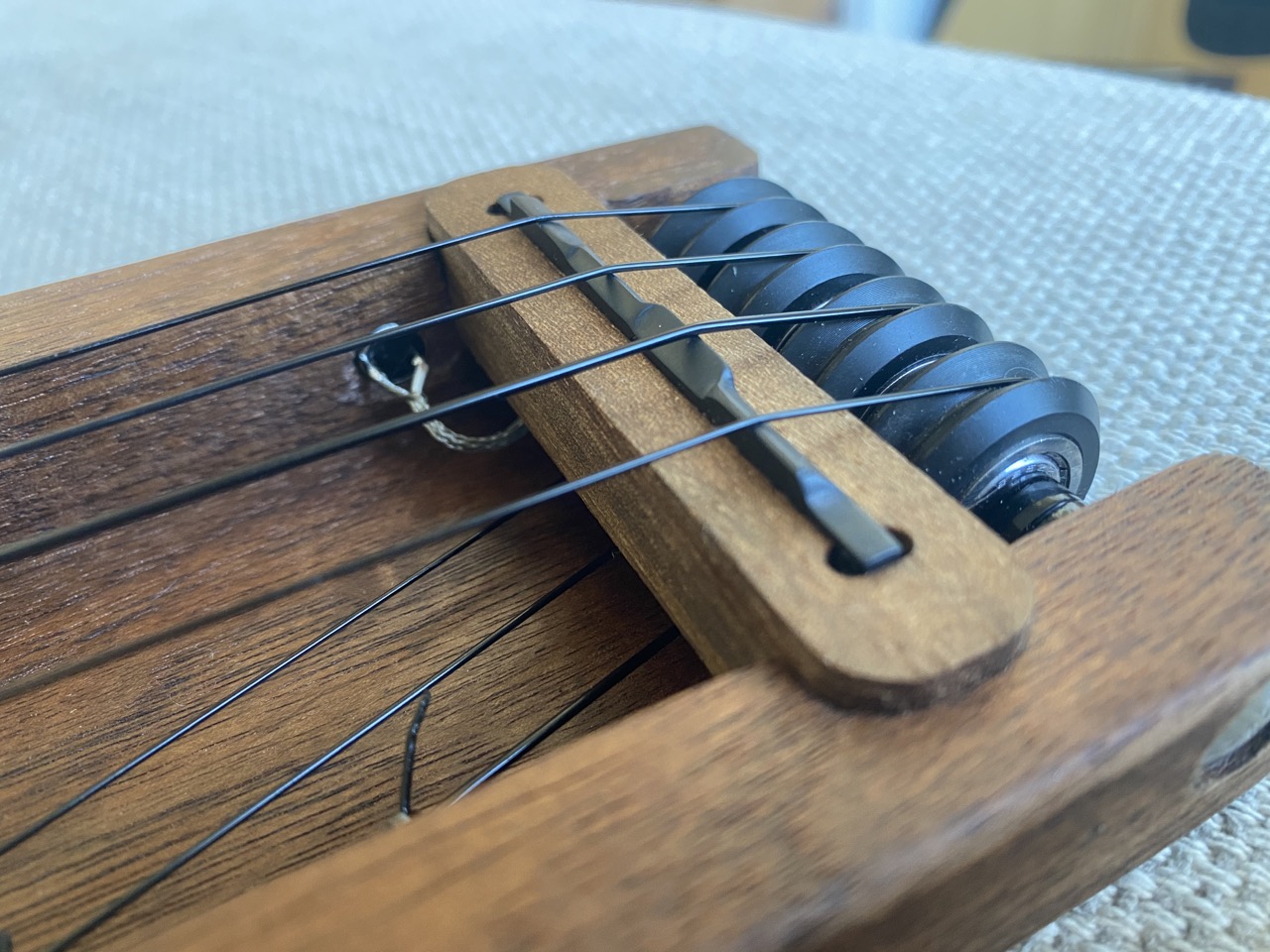
I crowdsourced the ideal angle for my tuning pegs (it’s 22.5°), but using any angle other than 0° means getting creative with how the tuners are mounted. I have no idea how Risa did it, but I was able to get angled flat faces on both sides by boring a full size hole through the body and then gluing a hollow plug back in:
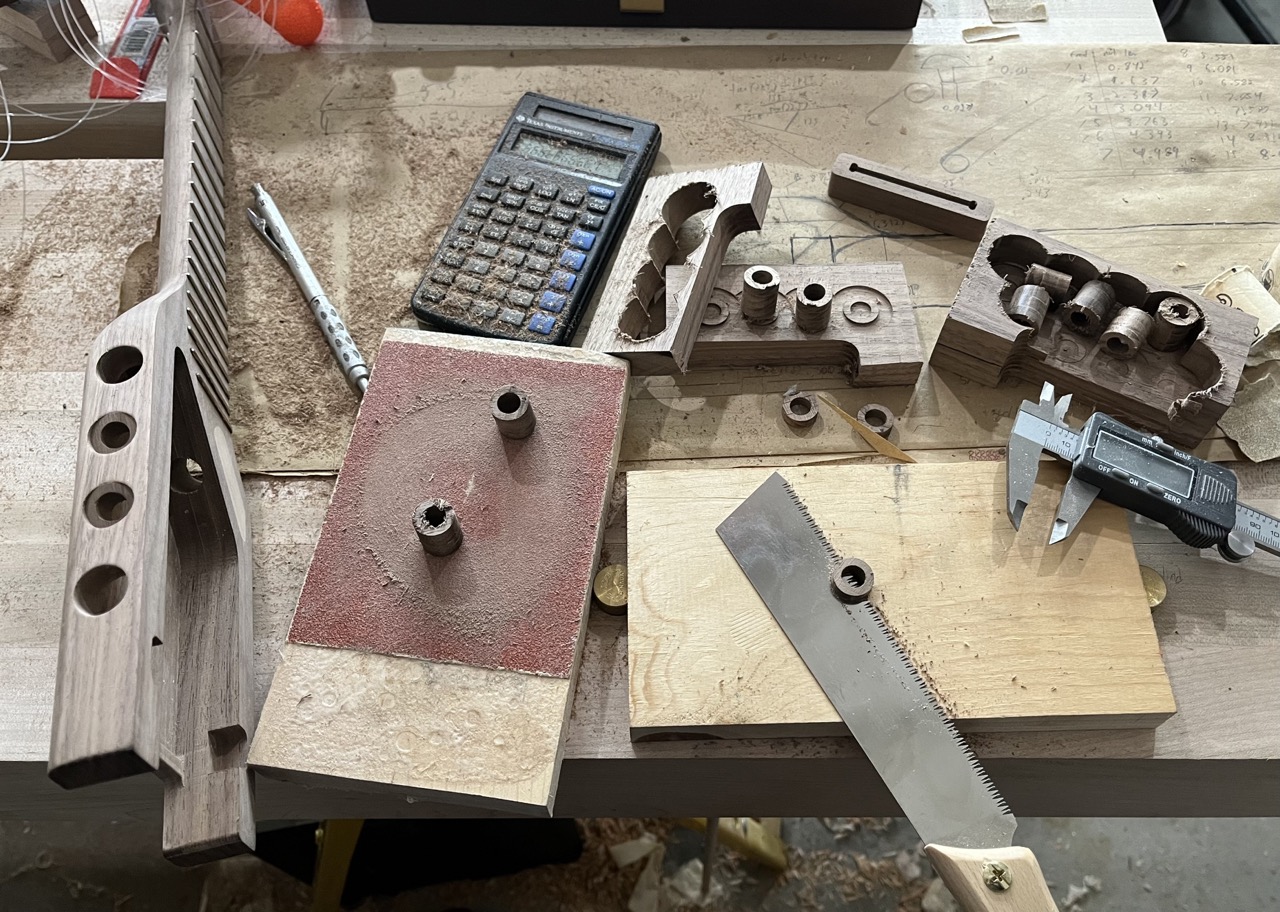
And, of course, it had to have that built-in tuner:
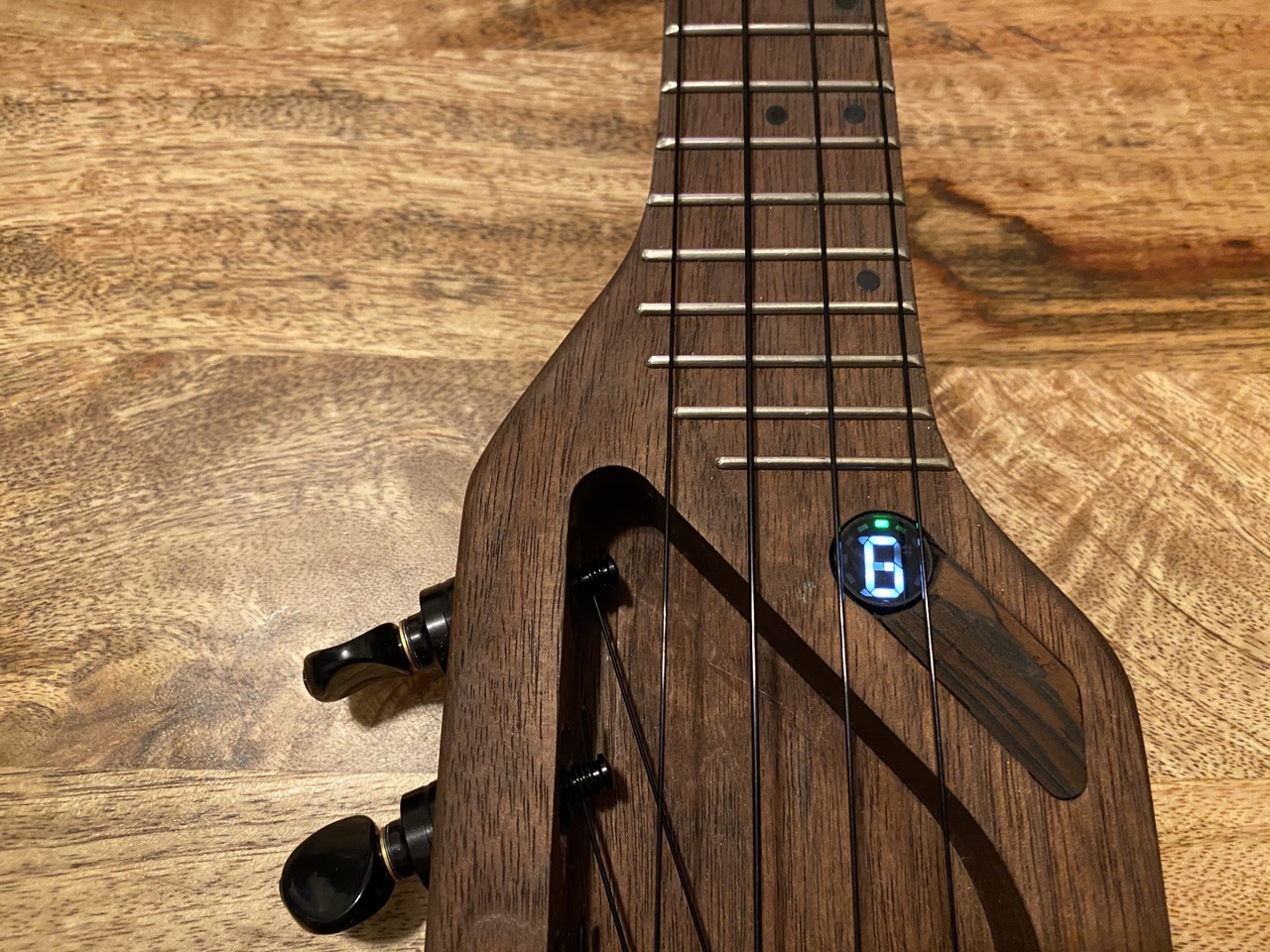
v2
I learned a lot making Tanya’s ukulele, so when Nicole needed one for her Brompton there were a couple things worth doing differently.
Shaping the neck was a lot of careful manual labour, but since moving across the bay I now had easy access to Jesse and his CNC (which is fully 3D while the Origin is best described as 2.5D), so we modeled and machined every contour of the second ukulele. It was a huge improvement not only to the process of making the instrument, but also the finished product—you can feel some lumps on the neck of Tanya’s but Nicole’s is bang on:
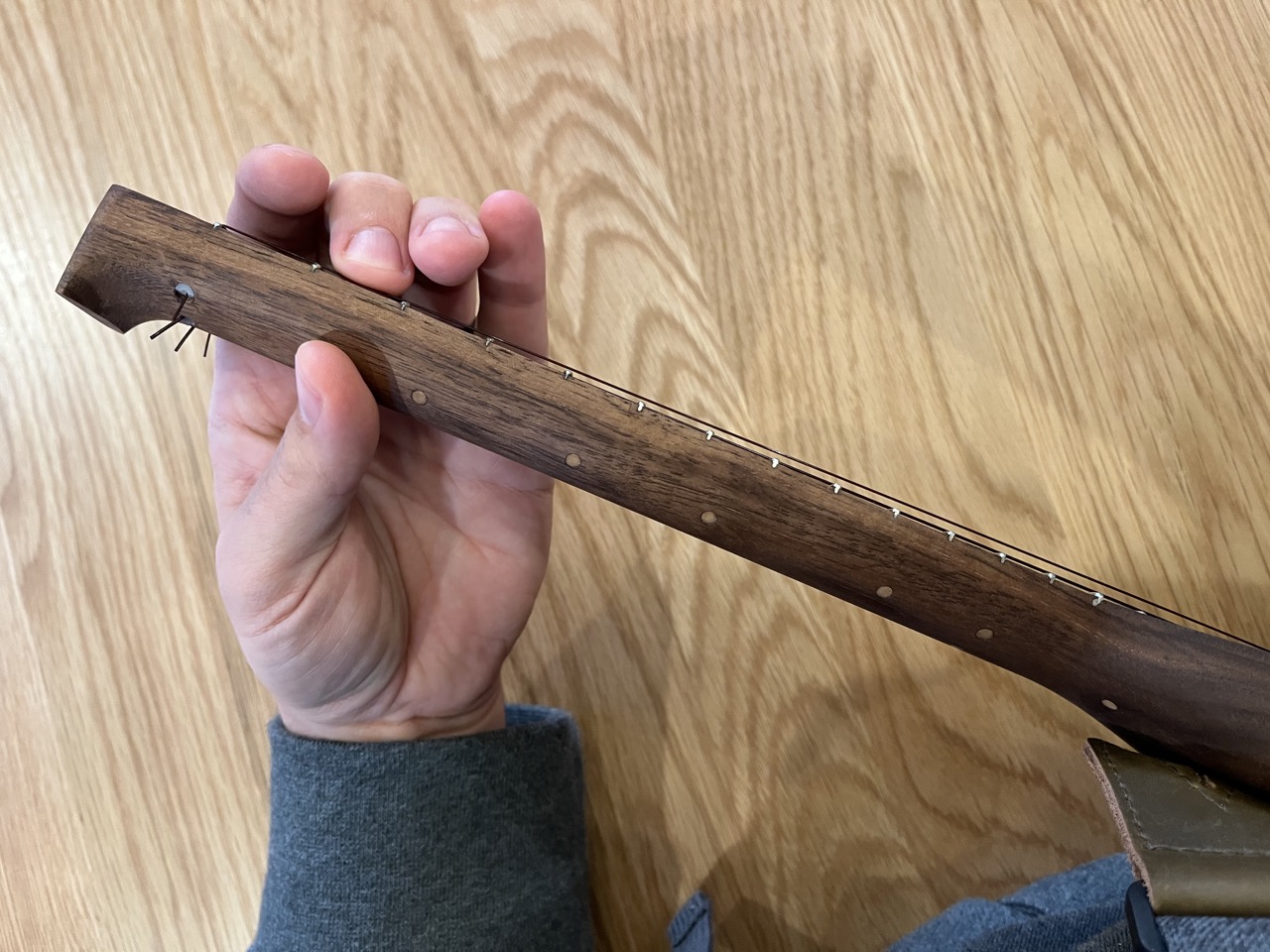
The tuner sticks out through the back side of Tanya’s ukulele. This was intentional to leave access to the tuner’s button and screw cap, but it also meant that the tuner got turned on (or off) whenever her ukulele was put down. On Nicole’s ukulele we nestled it across the body instead:
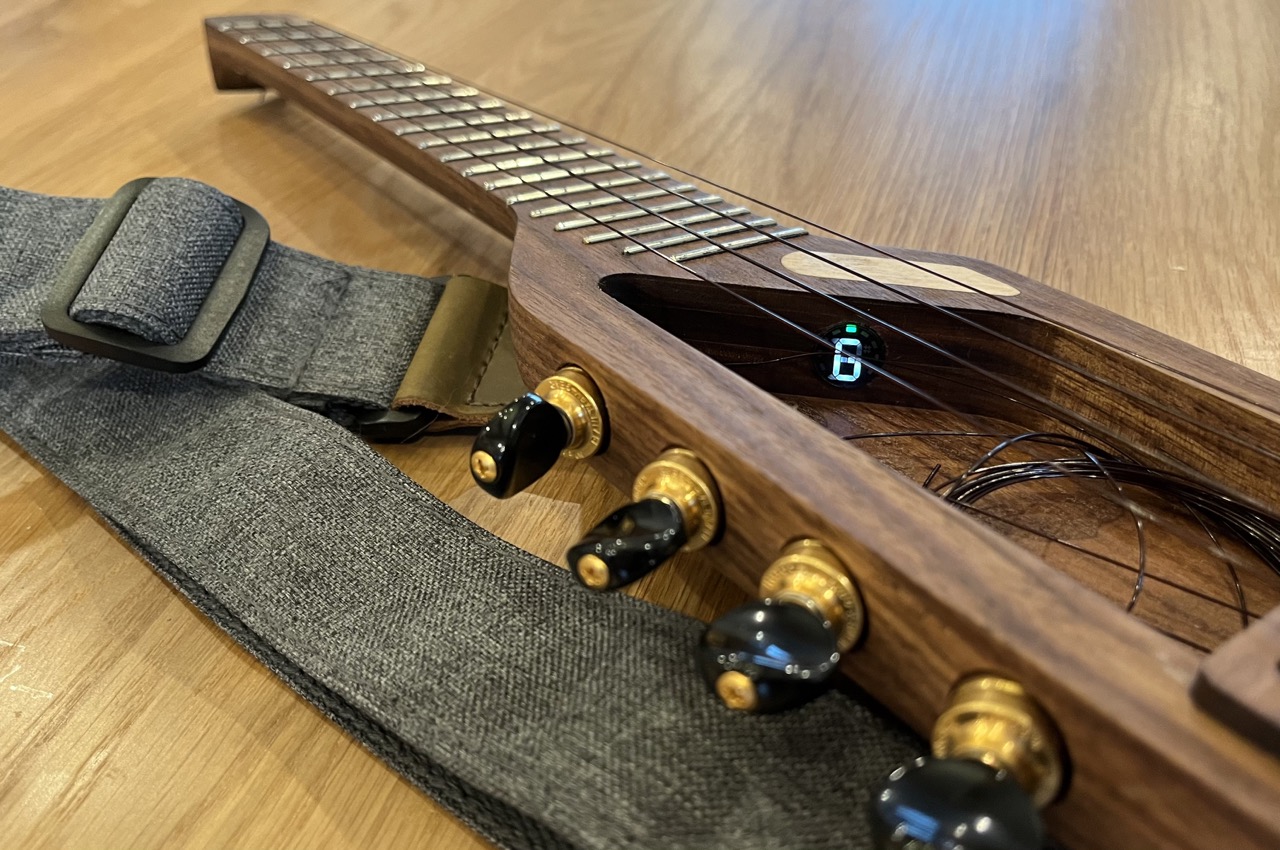
Make your own
Here’s a zip of Origin-compatible SVGs for the v1 ukulele, but I’d also encourage you to take the lessons I learned and make something that’s all your own; I’d love to see what you come up with!